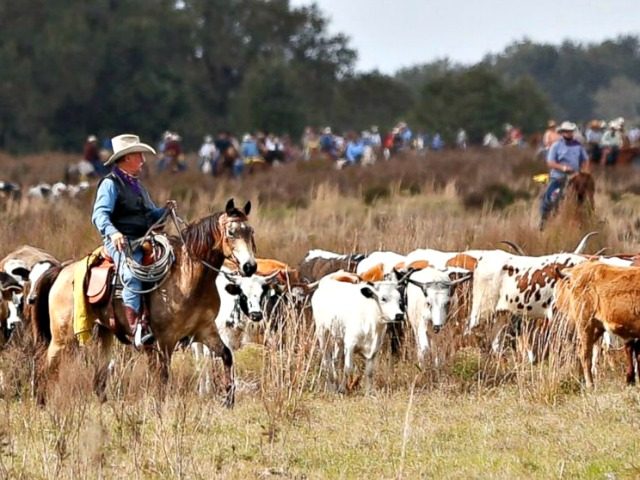Environmentalists filed suit this week against the National Park Service, charging that the federal agency’s agreement with ranchers to allow cattle grazing on certain portions of the Point Reyes National Seashore north of San Francisco violates laws, including the controversial Clean Water Act.
The updated management plan is part of an ongoing arrangement between ranchers that dates back to the 1800s, according to media reports, including the San Francisco Chronicle:
The newly updated plan allows commercial dairies and beef ranches to continue operating, maintaining past livestock numbers of about 5,500 total cows and bulls.
The ranches, officials say, are part of the park’s history and culture. Much of the national seashore, established in 1962, was acquired from ranching families, and the park’s enabling legislation gives administrators the ability to continue the practice.
Courthouse News Service reported on the management plan before the latest agreement:
While the fight has brewed for decades, the latest installment dates back to a 2016 settlement between the park service, the conservationists and the ranchers. At the time, there was optimism that comity could be reached among the groups with their diverse interests.
“Today, my ranch provides habitat for several threatened California native species including the California red-legged frog, is home to several native grasses, and provides pastoral habitat for an extremely diverse ecosystem,” rancher David Evans, CEO of Marin Sun Farms, said after the settlement was reached.
But environmental zealots behind the lawsuit are unhappy with the plan, claiming it will hurt the tule elk herd at the park.
“This plan is a giveaway to the cattle industry,” Deborah Moskowitz, president of the Resource Renewal Institute, which is part of the suit filed with the U.S. District Court of Northern California, said. “It perpetuates decades of negligence by the very agency charged with protecting this national treasure.”
“The park service has long mismanaged Point Reyes by allowing ranchers to use and abuse the park for private profit,” Jeff Miller with the Center for Biological Diversity said. “Now the agency wants to treat our beloved tule elk as expendable problem animals to be shot or removed.”
“The park service is unlawfully prioritizing the commercial needs of ranchers over the natural environment and the public’s use and enjoyment of these majestic public lands,” Lizzy Potter, a staff attorney at Advocates for the West, which represents the plaintiffs in the lawsuit, said in the Courthouse News Service report. “The park service decided that ranching should continue in perpetuity without fully disclosing its plans or the environmental consequences.”
A 2019 article in Beef Magazine titled its report “Cattle grazing is critical for a healthy ecosystem:”
From a resource standpoint, cattle are beneficial through the many by-products we gain from beef production. Leather goods, makeup, deodorant, insulin for diabetics and so much more — I challenge any industry to tell me the eco-footprint of creating these items synthetically is greener than utilizing the entire cow from nose to tail.
From an environmental standpoint, cattle play an irreplaceable role in maintaining top soil, promoting biodiversity, protecting wildlife habitat, reducing the spread of wildfires, providing natural fertilizer and so much more.
According to the park’s website, the park is already heavily regulated to protect wildlife and nature.
The website states:
The Drakes Beach elephant seal pupping area as delineated by signs at the western-most end of Drakes Beach is closed to all entry due to seal activity at all times of the year. This closure is necessary to protect an established elephant seal colony from disturbance and protect the public. The elephant seal colony is used all year. No management action other than closure is sufficient.
Other areas of the coastal area are closed from December 15 to March 3 to protect elephant seal pups.
“A Natural Sanctuary, A Human Haven,” the headline on the website states:
From its thunderous ocean breakers crashing against rocky headlands and expansive sand beaches to its open grasslands, brushy hillsides, and forested ridges, Point Reyes offers visitors over 1500 species of plants and animals to discover. Home to several cultures over thousands of years, the Seashore preserves a tapestry of stories and interactions of people. Point Reyes awaits your exploration.
The Park Service issued a press release to announce the latest management plan in September:
“Point Reyes National Seashore protects diverse natural and cultural resources that can serve as a model where wilderness and ranching can coexist side by side,” said Shannon Estenoz, Assistant Secretary of the Interior for Fish and Wildlife and Parks. “We recognize and deeply respect the passion that so many people have about how to best care for this special place and look forward to ongoing stakeholder engagement in the years to come.”
“This plan strikes the right balance of recognizing the importance of ranching while also modernizing management approaches to protect park resources and the environment. Input gained throughout this planning process was critical to shaping the National Park Service’s final plan,” said Craig Kenkel, Point Reyes National Seashore superintendent. “We look forward to bringing together the diverse perspectives that have helped shape this plan and working collaboratively to manage these complex lands for this and future generations.”
The selected action described in the ROD includes modifications made to the preferred alternative after the release of the final EIS (FEIS). Modifications to the selected action are within the spectrum of alternatives considered and analyzed in the FEIS. These modifications are further responsive to public comments raised during the planning process, include conditions agreed to at the public hearing with the California Coastal Commission, and incorporate feedback from regulatory agencies.
Modifications of the plan include, according to the press release: more robust requirements for ranch operations, further restrictions on ranch operation diversification, and improvements to the management of free-ranging elk.
“Having completed years of analysis and public hearings, park officials say they’ve completed the proper review and paperwork,” the Chronicle reported.
Follow Penny Starr on Twitter

COMMENTS
Please let us know if you're having issues with commenting.